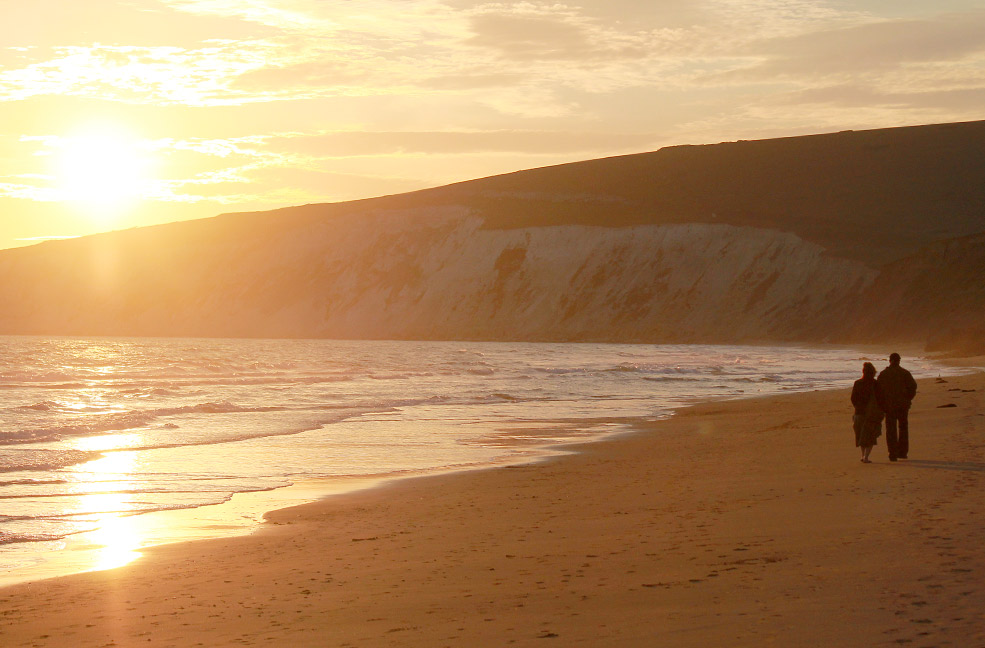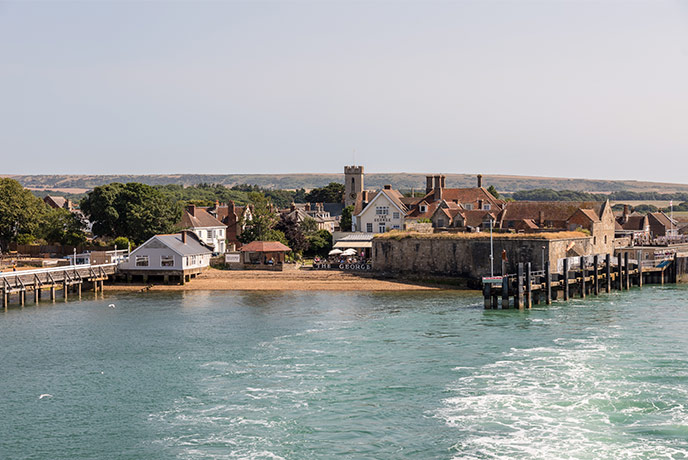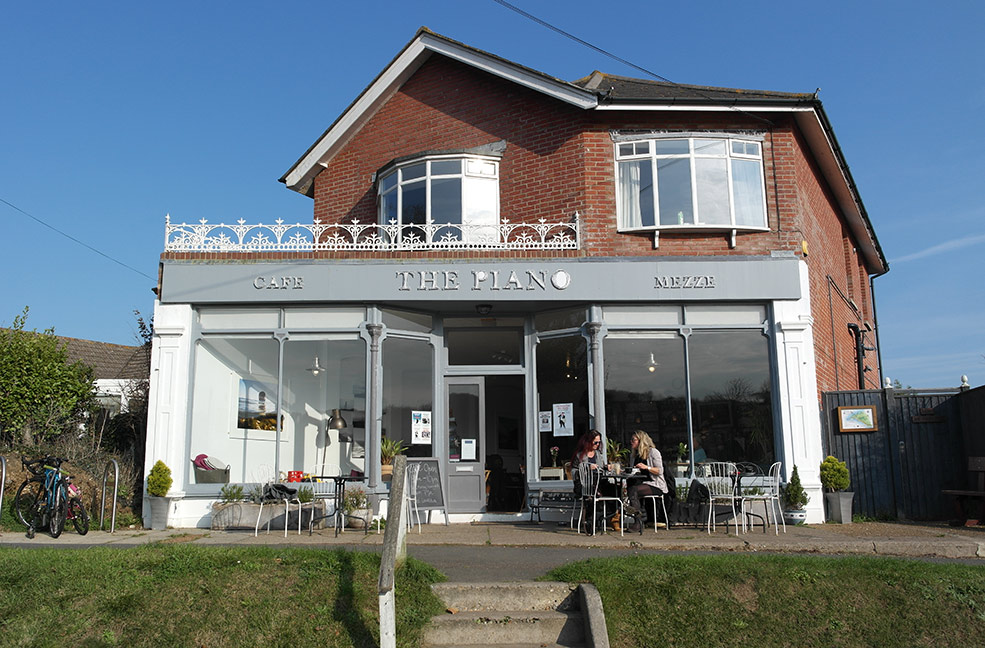The royal estate at Osborne is a display of 19th century grandeur and design that surpasses all other Victorian architecture on the Isle of Wight, which is saying something as there are some incredible historic buildings to see during your visit.
Queen Victoria’s holiday home boasts graceful, Italian-style architecture while the private bay shows off the natural beauty of the Island. Then there are Osborne’s gardens, created under the guiding hand of Prince Albert and the curious charm of the children’s Alpine chalet and allotments.
Visitors planning a visit should allow a full day to explore the history, artwork and landscaped gardens – finished off perfectly with an ice cream on Osborne Beach. You will soon see why Queen Victoria described Osborne as ‘paradise’!
For an unforgettable holiday experience, stay in one of our cottages near to Osborne. Some are even on the Barton Manor estate, which was once owned by Queen Victoria.
Find out more
The history of Osborne
The house
The gardens and Swiss Cottage
The beach
Facilities at Osborne
Planning your visit to Osborne
The history of Osborne
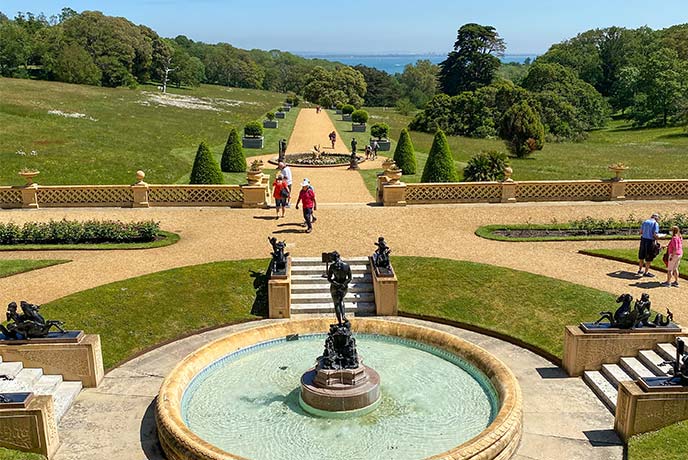
In 1840, Queen Victoria found herself wanting a country escape from her homes in Windsor, London and Brighton. She sought the help of Prime Minister Sir Robert Peel and requested ‘a place of one’s own, quiet and retired’.
Osborne House was placed on the shortlist and when the Queen visited in 1844 she was delighted that she could ‘walk anywhere without being followed or mobbed’. The sale was completed in 1845 for around £28,000, prompting Victoria to enthuse in her journal that it was ‘quite a paradise’. She particularly admired its extensive grounds and the way the woodland met the beach.
It soon became apparent that the large house wasn’t quite big enough for a growing family and a significant staff. Victoria commented that the rooms were ‘small but very nice’ and that it could do with a ‘few alterations and additions for the children’.
A building project worthy of Grand Designs began, with Prince Albert getting heavily involved in the plans and notable London builder Thomas Cubitt was enlisted to oversee the work. By September 1846, the family began staying at Osborne but work continued for several years before it was finally completed in 1851.
Over the next 50 years, the royal family spent much time at Osborne. Even in her final decade, Victoria would stay for 90 to 100 days, and it was at Osborne that she died in 1901.
In the following years, part of the house was used as a convalescence home for officers including AA Milne, creator of Winnie The Pooh. Another part of the estate became a Royal Naval College and was attended by two of the royal children.
However, while much of the estate was put to use, Edward VII declared that his mother’s private rooms should be out of bounds and for more than half a century a large part of the house was preserved behind iron gates. Queen Elizabeth II finally allowed the public greater access from 1955 and it was handed over to English Heritage in 1986.
The house
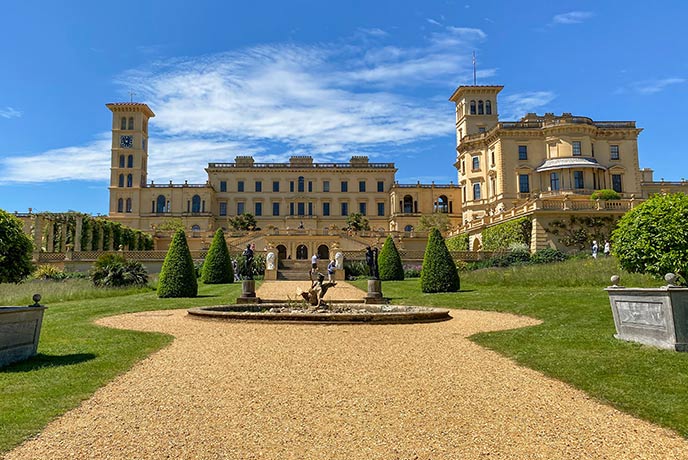
Osborne House can be neatly split into three sections.
The Household wing is used as a visitor entrance and occupies the largest amount of space at Osborne. It was home to staff and guests and many of the rooms are closed to the public. The notable exceptions are the Council Room and the Audience Room. It was in the Council Room that Queen Victoria regularly hosted the privy council of government ministers who updated her on issues affecting the country.
It was also where Alexander Graham Bell gave a demonstration in 1878 of his recently invented telephone. The Queen commented that it was ‘rather faint’ but still agreed to telephones being installed at Osborne. A highlight of the Audience Room is the chandelier that was made to resemble Convolvulus, which was Albert’s favourite flower.
The second section of the main house is the Pavilion, which offers the very best views of the Terrace and the Solent. This wing was the royal home with a design similar to one of London’s Georgian town houses. Visitors follow a route that begins with the dining room, where Queen Victoria lay in state after her death in 1901, and continues through to the drawing room, billiard room, and the hand-operated lift, which took Queen Victoria upstairs in her later years.
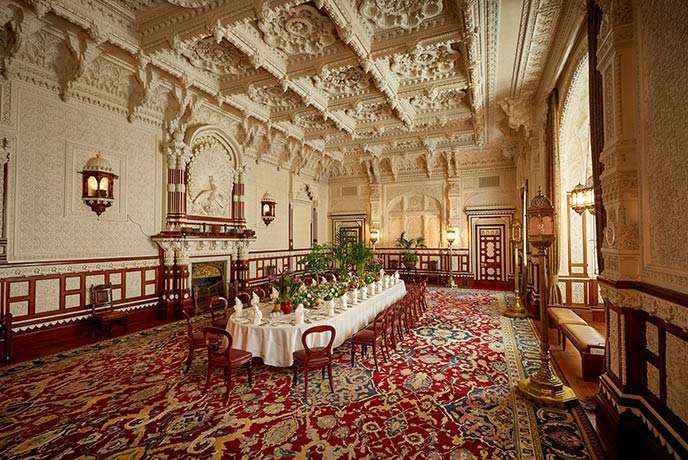
Upstairs in The Pavilion are the Royal’s private rooms, including Victoria and Albert’s dressing rooms, bathroom and the Queen’s bedroom. Servants continued to bring warm water to Albert’s dressing room forty years after his death, fearing that the mourning Queen would not like the tradition to end. The Queen died in the bedroom on this floor – you can still see the iron gate used to maintain the shrine, which was finally opened in 1955.
Finally, in the main house is the Durbar Wing, which was opened in 1891 as a home for Prince and Princess Henry of Battenburg. The Princess – also known as Beatrice – was a great help to the Queen in her later years and she was only given permission to marry if she agreed to live nearby.
The centrepiece is the Durbar Room, which is beautifully decorated with a northern Indian theme. Victoria never visited India but she was its Empress and received many gifts from the country, which can be seen on display here.
The gardens and Swiss Cottage
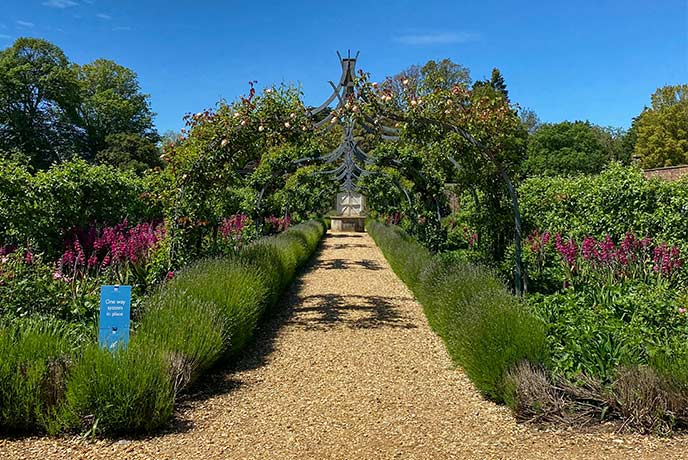
One of the loveliest gardens on the Isle of Wight, the grounds of Osborne used to extend to an impressive 2,000 acres. While now it’s more like 350 acres, there is still plenty to explore on a day out!
The terraces are the pristinely presented gardens directly in front of the house as you look down towards the sea and are an example of remarkable Victorian engineering. Keep an eye out for the white royal myrtle plant on the upper terrace during your visit. It was planted in 1845 and has since been used in several royal wedding bouquets – including those held by Kate Middleton and Meghan Markle!
Next up, it’s the walled garden and the pleasure gardens, which are near to the car park. The walled gardens’ entrance is a grand archway that was partly made from the remains of the original Osborne House. Towards the end of Victoria’s life, the walled garden was mostly used as a place for growing flowers to decorate the house. You can now see well-established fruit trees including apples, figs and plums.
The impressive eight sided summerhouse nearby was sometimes used by the royal children as a location for al fresco dining and your own princes and princesses can spend a bit of time at one of Osborne’s two playgrounds around here.

Swiss Cottage, which is a highlight for many visitors, is a curious Alpine style cabin that was built as the ultimate playhouse for the children where they could pick up life skills such as cooking and gardening. The children were encouraged to get a taste for business by selling the vegetables to their father for pocket money.
The children’s allotments have been recreated as they would have been and you can even see replicas of the miniature royal wheelbarrows! The Swiss Cottage has its own playground here, perfectly placed for a break while walking to the beach.
Inside the Swiss Cottage, the children had the run of a sitting room, kitchen, scullery and larder – complete with three-quarter size kitchen equipment. The first floor includes the Queen’s Room where the children would serve tea or lunch to their mother. It was here on July 12th 1861 that the royals had their final family meal together before Prince Albert died.
There are other curios near to the Swiss Cottage including a museum showing off stuffed animals and a scaled-down military fort.
The beach
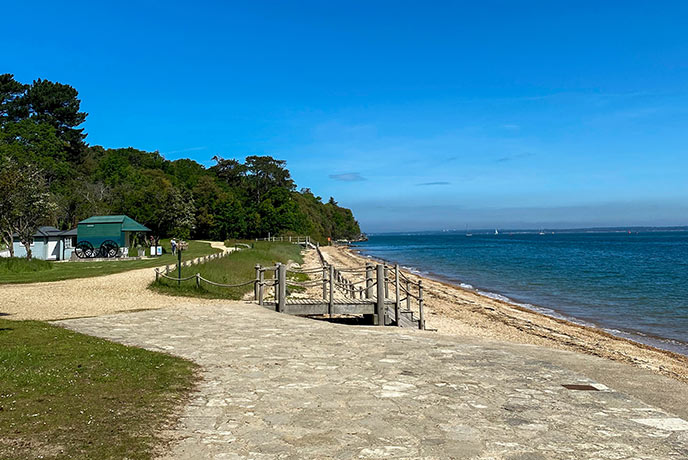
Queen Victoria’s private beach remained closed to the public for many years before a major project saw English Heritage restore access and re-open it in 2012. The effort was well worth it and it’s now a glorious spot to spend an hour or two during a visit to Osborne. Pull up a seat, order an ice cream and breathe in the sea air. You’ll soon feel like royalty!
After spending a few years as a chicken coop in the 1950s, the Queen’s bathing machine now sits proudly on the beach as a quirky relic. For many years, there was also a wooden contraption at the beach that helped the children learn to swim. It could be lifted up and down to make it the ideal depth for the young swimmers.
There are two routes down to the beach you can choose between. Head straight down the wooded Valley Walk from the main house or take the Rhododendron Walk, which is a colourful treat in spring and early summer, if you’re setting out from the Swiss Cottage.
Check out some of the Isle of Wight’s other beautiful beaches to really make the most of the Solent’s sparkling waters.
Facilities at Osborne
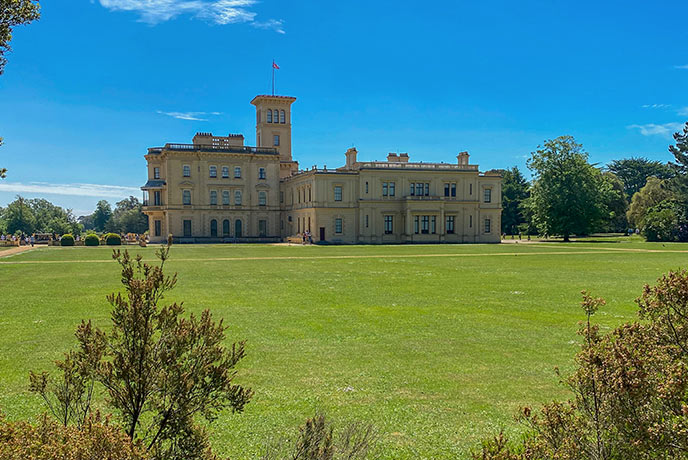
Keen walkers can explore the estate on foot to get a good feel for how the royals experienced the site. However, there is a free shuttle bus that travels between the main house, the Swiss Cottage and the beach for those that fancy a more relaxed tour.
Wheelchair users can be dropped off by the main entrance or use the disabled parking spaces and there is easy wheelchair access to the ticket area and gift shop. The downstairs of Osborne House is wheelchair accessible while a lift provides access to the first floor. It may be worth checking that the lift is available before you visit if you are particularly keen to visit Queen Victoria’s bedroom and the children’s nursery. Most of the grounds can be explored by wheelchair users thanks to a mix of tarmac paths and other firm surfaces. The main exception is the walled garden, which is mostly gravel.
There are four public toilets around the grounds at Osborne including facilities at Swiss Cottage and at Osborne beach.
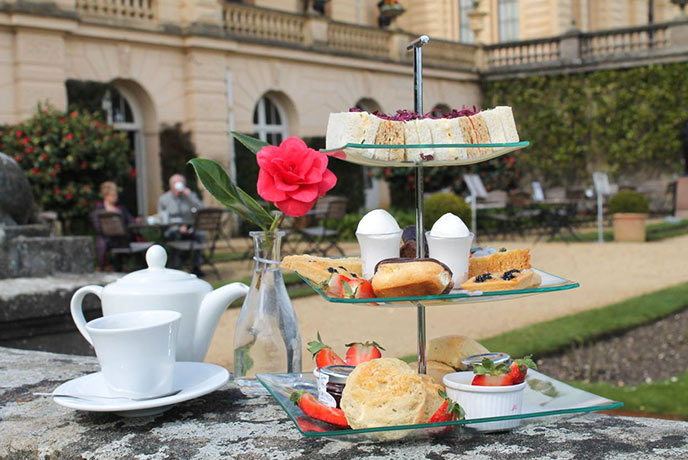
Picnics are welcome in the grounds but many visitors head for one of the four food outlets on-site for a royal treat:
The Petty Officers’ Quarters Café
Located by the entrance, this welcoming café is open to everyone, whether you’re visiting Osborne House or not, which is great for those wanting a quick glimpse and a piece of cake! You can grab a selection of light lunches here as well children’s lunchboxes that you can take with you as you tour the house.
The Gazelle House
Found near Swiss Cottage, this small but ideally placed café is great for a quick drink and a snack as you explore the grounds. You can sit outside and soak up the glorious surroundings as you dine on a piece of Beatrice cake, which was inspired by a 19th century recipe and named after Victoria’s youngest daughter.
The Pavilion Beach Ice Cream Parlour
Indulge in a scoop (or two) of the Isle of Wight’s famous Minghella ice cream from the Pavilion café. The family-run ice cream company is famous for its flavours as well as for son Anthony, who won the Best Director Oscar for The English Patient film.
The Terrace Restaurant
Located near the main house in Queen Victoria’s very own private chapel, The Terrace Restaurant serves scrumptious light lunches, cakes, and snacks, all of which are made with local ingredients where possible. You can grab a half portion for the kids or they can take a look at the children’s menu, which features some great mini meals for the little ones.
Planning your visit to Osborne
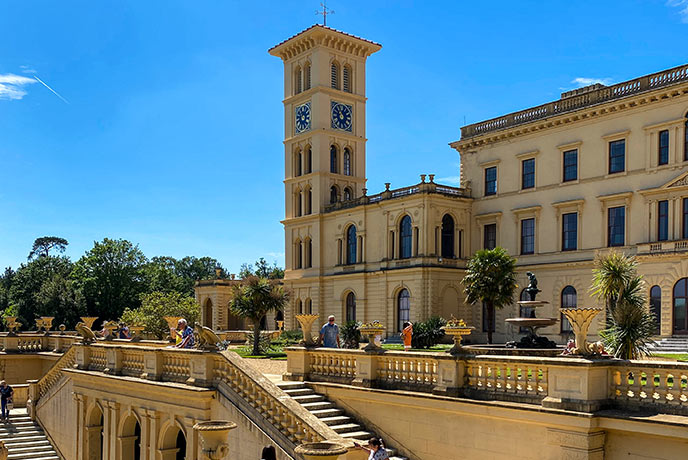
Osborne is just outside of East Cowes, only about a mile from the Red Funnel car ferry. If you’re travelling by bus, catch the number four from Ryde or the number five from Newport. Drivers can use the free car park. If you want to arrive on foot, consider the Medina Estuary walk, which explores Newport and both sides of Cowes.
English Heritage members get in free and a family ticket costs somewhere in the region of half the price of a year’s annual membership. If you also plan to visit English Heritage’s castles in Carisbrooke and Yarmouth then it may be worth considering an annual pass.
Most visitors to Osborne begin with a tour of the main house, but it’s worth a quick check of the weather forecast before you arrive. If it’s a mixed day of weather, visit the house when it’s raining and explore the rest of the estate in the sunshine. The beach is particularly beautiful with the Solent sparkling. A bit of sunshine also brings out the best colours in the walled gardens and in the Rhododendron Walk.
The Osborne estate covers hundreds of acres and it rarely feels crowded. However, some parts of the house get busy, particularly the smaller rooms such as Victoria’s bedroom. Visit early in the day if you would rather avoid the crowds.
Excited for a royal tour through history? Explore our extensive catalogue of holiday cottages on the Isle of Wight and things to do on the Island as you plan your visit to Osborne House.


